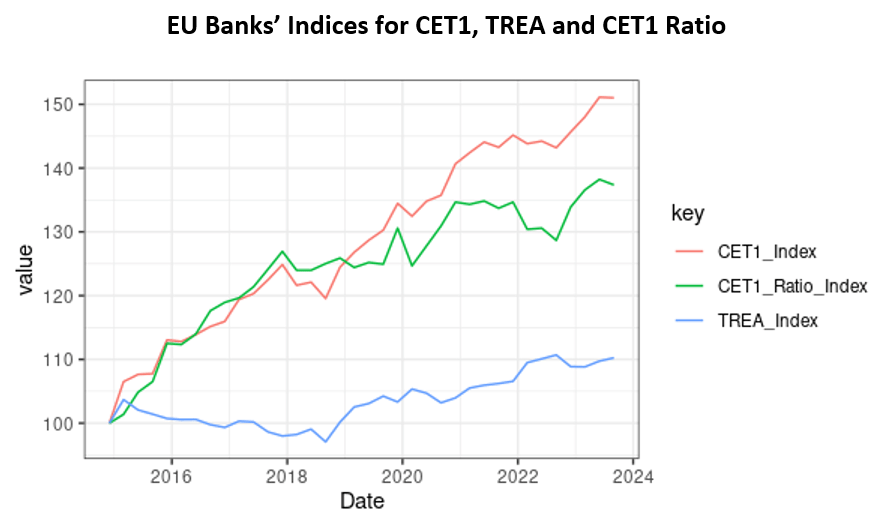
European banks experienced record-breaking profitability and capitalization toward the end of last year, according to a recent report from the European Banking Authority (EBA). But in volatile markets flush with uncertainty and rife with geopolitical risks, supply-chain dangers, cyber threats and political unrest, they must be very careful to avoid risk management complacency.
Banks can achieve this, in part, by remembering exactly how they built capital while minimizing risk exposure. To better understand the current state of EU banks, we need to first consider the EBA’s key findings.
The recent performance of EU/EEA banks is undeniably commendable. Their average return on equity (RoE) is a robust 10.9%, demonstrating their financial resilience and strength. What’s more, a closer inspection of the EBA's data reveals that EU banks’ average Common Equity Tier 1 (CET1) ratio – a significant measure of a bank's financial health – now stands at 15.8%.
Just as impressive is the fact that banks’ CET1, which compares capital against assets, has risen steadily since 2015. What makes this achievement extraordinary is the backdrop against which this growth has unfolded. Over the past few years, EU banks have successfully navigated significant challenges posed by the COVID-19 pandemic, rising geopolitical unrest, and surging inflation.

Source: EBA Q3 2023 Risk Dashboard
The upward swing in the CET1 ratio (the green line in the chart) has been largely driven by a substantial increase in banks’ actual CET1 amount (the red line), which has experienced a growth factor of 1.5 from the beginning of 2015 to the present. In contrast, the growth of banks’ total risk exposure amount (TREA) has been relatively moderate, at a factor of 1.1 over the same period.
What this trend demonstrates is that EU banks have made a concerted effort to bolster their capital significantly, while ensuring that their risk-weighted exposures only saw moderate growth. This calculated maneuver was likely made in anticipation of the finalization of Basel III, which will take effect in Europe on January 1, 2025.
A Complex Landscape
While the EBA's risk dashboard publication does not specify the strategies employed by banks to weather these challenging times (and simultaneously expand their capital), a close look at the current economic conditions provides some clues.
In this complex landscape, high inflation and interest rates have emerged as a double-edged sword for banks. Though these conditions can have a negative impact on borrowers’ creditworthiness, they also present an opportunity for banks to increase their margin – i.e., the gap between the commercial rate and the funding rate.
The resilience of EU banks can also be attributed to other factors, such as the implementation of stricter lending standards, the maintenance of robust asset quality, and a strong labor market characterized by low unemployment (6% in the EU in 2023) and high activity.
All of these factors have contributed to banks’ growing capitalization. This has also been fueled by an efficient cost management strategy, reflected in the EU banks’ average cost-to-income ratio recently hitting a record low of 55.1% last year. Indeed, this has proven instrumental in further enhancing banks’ robust profitability.
Avoid Apathy
However, despite these successes, it’s crucial for banks not to be lulled into a false sense of security. There are several potential threats looming on the horizon that could present sizable challenges across the EU, including geopolitical conflicts, climate and environmental risks, and uncertain fiscal policies – with nine EU countries holding parliamentary elections this year.
Consequently, while the EBA report paints an optimistic picture of the financial health of EU/EEA banks, it should not be interpreted as a comprehensive and all-encompassing view of their performance, their potential vulnerabilities, and the threats they currently face.
The most salient lesson to be learned from the EBA's report on EU banks is the need for unwavering vigilance, even in the face of prosperous economic conditions. Banks and their financial risk managers must remain alert and prepared for future uncertainties.
Dr. Marco Folpmers (FRM) is a partner for Financial Risk Management at Deloitte the Netherlands.
Topics: Default